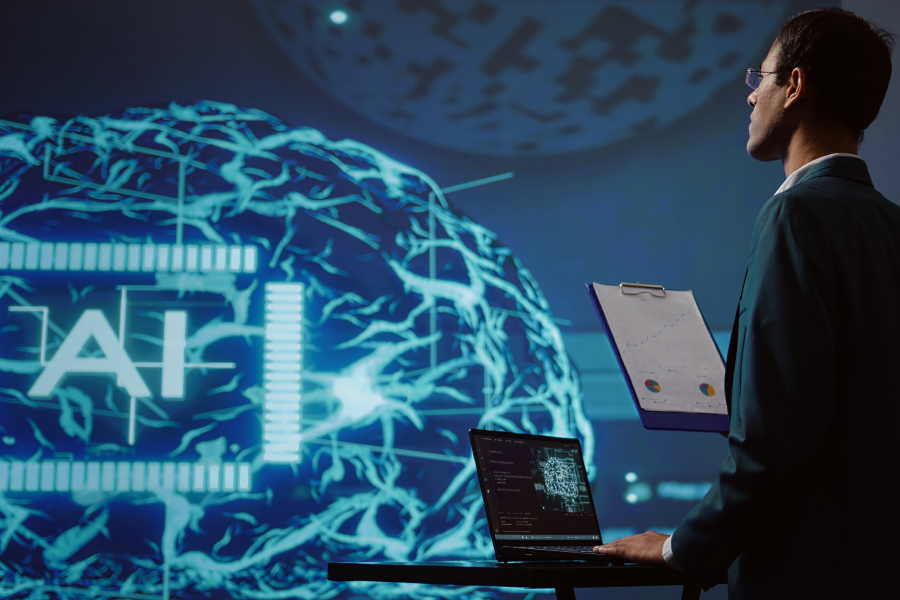Smart Patient Tracking has become a common technological advancement since the onset of the COVID-19 pandemic. It has eased the process of tracing the details of a patient’s medical history and his location. Radio-Frequency Identification (RFID) and Internet-of-Things (IoT) have been the most useful developments in this field.
However, like every piece of technology, this also comes with its own pros and cons. Here is a rundown of both sides of the spectrum.
What is Smart Patient Tracking?
Smart Patient Tracking is the function of two core technologies- RFID and IoT.
RFID is concerned with tracking and IoT with the storage and analysis of data. These technologies can be combined to create a healthcare software or tool to track patients in the most convenient manner.
When a person is admitted to a hospital, he is given an RFID tag with details such as ID, name, medical record, current condition, medication, and so on. The hospital is lined with readers across ceilings and walls. These readers trace all the information from the tag and transfer it to the IoT cloud. Here the processing and analysis take place. Analysis in the IoT cloud is a real-time process.
The tag is transferred to another patient as and when one person gets discharged.
Pros of Smart Patient Tracking
By putting this tracking procedure to use, you can bridge the gaps of the traditional healthcare system. Patient security is enhanced ten-fold with the employment of this technology. This assures that patient satisfaction also increases.
1. Tracking the patient’s location
The tag is essentially important to track the live location of patients. This is supremely significant as far as elderly or patients with mental disorders are concerned. For example, Alzheimer’s patients have a tendency to forget things. So, it’s probable that they might get lost in the hospital premises, unable to find their way back. This can be avoided with the help of tracking tags.
The main benefits that you can derive for this system are-
· Notification sent to the housekeeping department to clean the room as the patient leaves the space.
· Family members can easily trace the patient’s location.
· Better opportunity to track child patients.
2. Ensuring patient safety
Smart patient tracking helps in identifying emergencies in the patient’s health. For example, if an incident of bleeding after the injury happens with a patient, the respective nurse will be informed about the same after analyzing the bodily changes.
Similarly, a hospital emergency like a fire can be tackled better if concerned people are notified by the system. This can also be used to ensure that a pattern can be drawn later and the hospital identifies the areas susceptible to unwanted incidents.
3. Monitoring treatment
Quite often we forget to take our medication or attend a doctor’s appointment. This can be changed by dropping notifications to the responsible person, which can be a nurse at times.
Even the patients get notified on their mobile phones about the same.
4. Managing internal workload
Tracking systems can also better the internal functioning of the healthcare ecosystem. As and when a patient’s appointment is tracked, the staff can get notified about the department that has the most amount of load.
This will help in regulating the staff and schedule to suit the demand.
5. Evaluating admission rate
All the information present in the system can help in deciding the amount of patient flow in the hospital. This further contributes to deciding the number of staff needed, the amount of medication and equipment needed to cure people.
Cons of Smart Patient Tracking
With the numerous advantages, there are also some downsides that you need to consider before putting this piece of technology to use.
1. Ethical problems
The controversial nature of the tracking system is because of the ethical issue related to tracking people. Constant tracking can hinder their privacy.
So, tracking should be a consensual process. The patient or his family should be asked to sign a contract before using a tracking system.
2. Patient’s reluctance to use a tracking system
It’s also possible for a patient to throw or remove his tracking system because they do not want to use it. Hospital staff should be on the toes constantly to tackle such a situation as it’s hard to foresee something like that.
3. Cybersecurity
These systems are provided with sensitive information such as a patient’s medical history, personal data, and the like. The recklessness of a hospital staff who have access to these details can actually lead to leakage.

To avoid this, proper training on how to use tracking systems and related technology should be provided.
In Essence
RFID and IoT are two of the best innovations in the healthcare industry. The tracking, sharing, and analysis of information related to patients have become much easier with the usage of these systems. However, they do have some shortcomings that can be addressed only with careful implementation.
In case you’ve been in the quest to search for a perfect healthcare software development partner, SoftGrid Computers with over a decade of experience in developing advanced softwares may be the right choice. Our experts may help you with their skills and suggestions in the field of the software you might have the idea for. Let’s get on a quick call!
Contact us now!

 Web and Full Stack
Web and Full Stack CMS and Frameworks
CMS and Frameworks Online Marketing
Online Marketing Cloud Services
Cloud Services ECommerce
ECommerce Mobile
Mobile



